When it comes to the art world, there isn’t a concept that can spark a bigger debate than “value”.But what is exactly value in art and what does it mean? If you read into it, value can be both a subjective and objective term, and is both scalable and yet unmeasurable. This is not a riddle, value can be an element and a concept that can define an art piece and help us understand its significance, merit, and even context.
Value is a word of great worth for artists, art connoisseurs, art lovers, and scholars. Value in art might refer to a defining element of the composition of an art piece that gives it depth, contrast, and balance, and also, the elementary meaning that categorizes something as art. Follow along with this world play and get to understand what is the meaning of value in the art world.
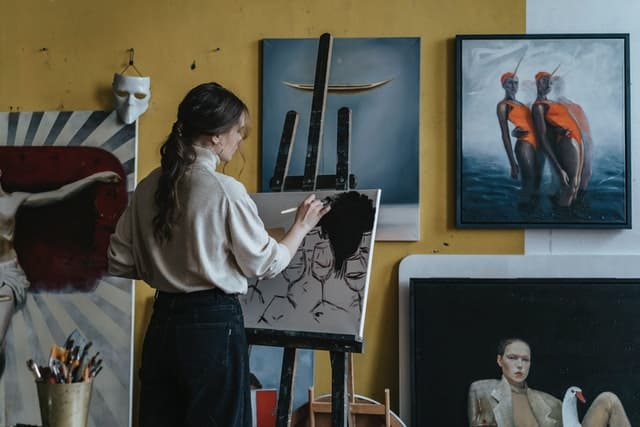
Value might refer to both an element of hues in an art piece and its price or cultural worth.
Contents
What do we talk about when we talk about value in art?
As mentioned before, value is a word that carries lots of meanings in the art world. One of them is really precise, the other one is subjective. But both of them help us define the worth (in merit and even market price) of a specific artwork.
Value might refer to one of the seven elements of art: the others being shape, line, colors, form, space, and texture. Value in art can be seen as a synonym for light. Why? Because this concept defines how an artist captures the way light hits an object creating highlights and shadows, depth, texture, and volume. This can be simply visualized on a grayscale: tints are the lightest values (where the light hits) and shades are the darkest.
But value might also allude to an almost philosophical aspect of art: it tells us about its worth, both cultural, social, and economic. Is it possible to put a price on something that’s collectively understood as invaluable? What defines the price market of an artwork? And what elements indicate an art piece is an achievement, a merit for the artist, or an accomplishment of creation.
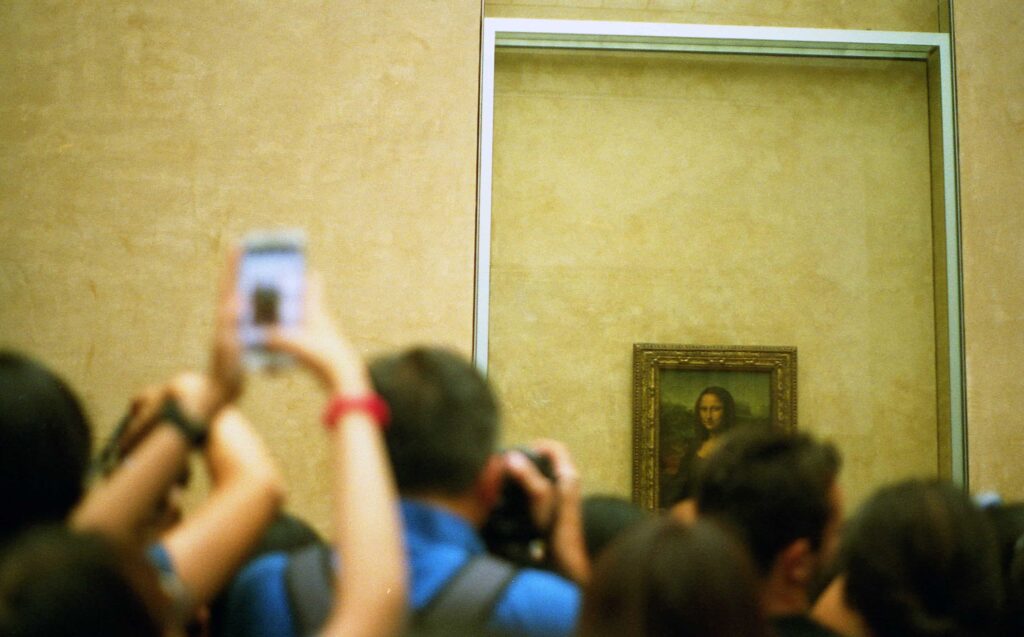
The eternal debate: can we put a price on a piece of art and its cultural worth?
What is the subjective value of art?
Art is subjective, and so is its worth. First of all, we must understand “worth” beyond economic concepts and prices. Think about this, an iconic piece by a world-renowned artist like Banksy can go on auction and sell for an impressive 1.5 million dollars, and at the exact moment that it reaches that “value”, the artwork self-destructs. The artist plays with the monetary value society and experts have put upon his creation and turns the tables around with a reminder: destruction is also a creative impulse. One he happened to find even more amusing. If you are wondering, this was an art print of the original stencil used to create the popular “Girl with Balloon” image.
The remnants of this almost performative piece were a partially shredded canvas with a spray-painted image that went off to sell in another auction for over 25 million dollars. More than the worth of the canvas and spray paint, more than the worth of the original work, the conversation that its destruction spun actually made this “destroyed” piece more valuable.
It captures a defining moment of our culture, of our present, of what we as a society appreciate and also despise. If the artist’s work serves as a barometer of the reality around us, this piece worked as a mirror of what our society now values.
The Social Value of Art
With or without intention what an artist creates ends up talking about way more than what we can see on the canvas. Whether we are studying a particular piece, a full body of work, or even a group of artists from the same school, or generation that usually work with the same techniques or subject. Both art lovers and scholars agree that there is a cultural value that cannot be measured, something that has no price and that is open to interpretation.
An artwork can tell us about the context that brought it to life, about the person behind it, about the reality of its subject, it doesn’t matter if it’s abstract or hyperrealistic, once a viewer is in touch with a certain art piece the experience or impact that has on them already talks about the value of the piece. You might look at an NFT and wonder how this is a piece of art with a high market value and yet, the way you feel about crypto art or the fact that the subject has crawled into the conversation tells a lot about its particular cultural value.
Art in general reflects society’s ideals, what is considered beautiful, horrible, important, and even cliche. It reflects upon us just as we reflect upon it: and that is where its value relies.
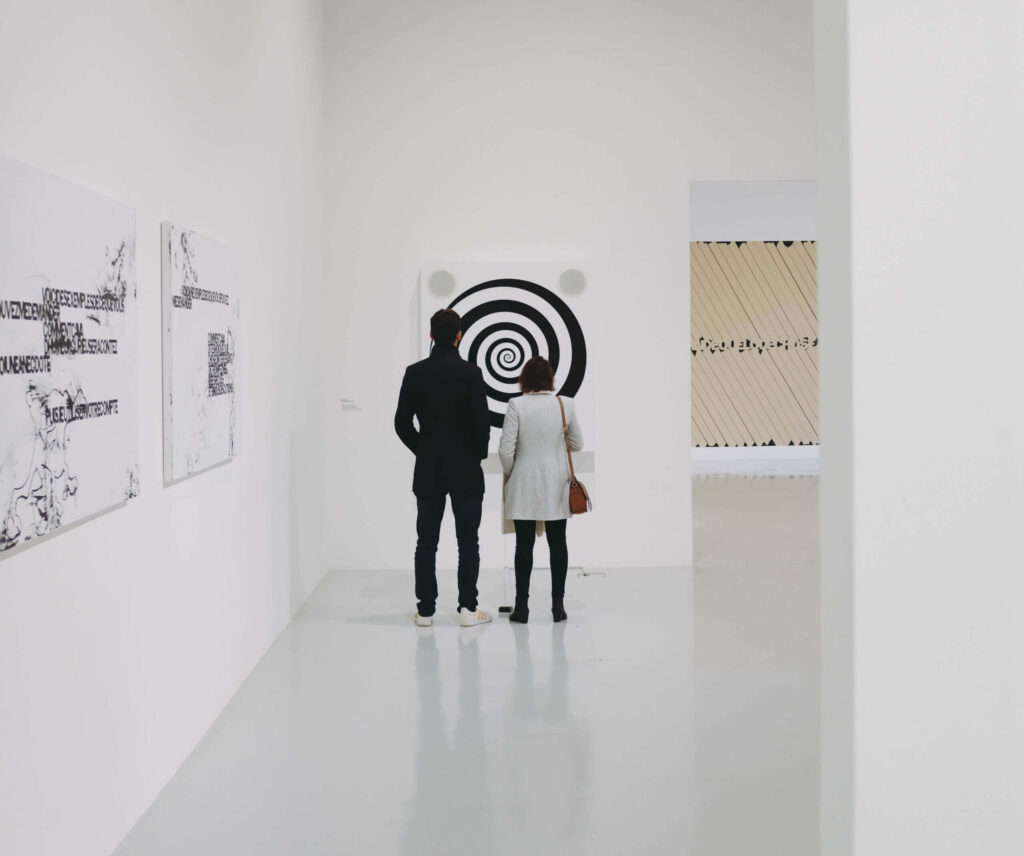
The art market generates fluctuations in the economic value of certain art pieces.
Art Market Value
An up-and-coming artist might find a way to put a price on their work by adding up the worth of the materials, technique, the number of hours they’ve worked on it, and even taking a look at the price that their colleagues have put on their own art pieces. More seasoned artists and galleries might directly call an art expert that will evaluate the piece, its materials, dimensions, the experience of the artist, and the value of previous artworks, and come up with a price. But when an artwork hits the market everything can happen…
The market has its own needs. A certain type of art might come into relevance and gain more value, and a new artist might see the value of their work rise after a big first sale to the right collector. Even the experts might be in awe of what happens when a certain piece goes to auction. A particular artwork can go on auction with a certain base price but the weight of its cultural value and the desire of someone to have the ownership of that piece might skyrocket its economic value.
The economic value of an art piece might fluctuate, that’s why some see art collecting as an investment in time.
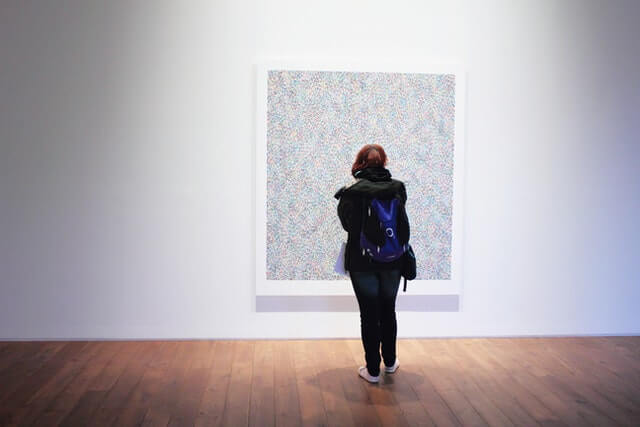
There is another aspect to value: the technique and expertise needed to capture light and shadow.
Objective and measurable: Value as an element of art
Value as a technical element of art is such an important one that it was once a quick way to tell the worth of an art piece. The element of value in art has to do with color and light: what are the lightest and darkest hues of color and how the artist plays with them to trick the human eye into seeing texture, depths, and mass in a plain canvas.
How an artist uses value talks about their expertise. The placement of the light source can create a dramatic effect that gives life to the image and makes it pop up in its two-dimensional frame.
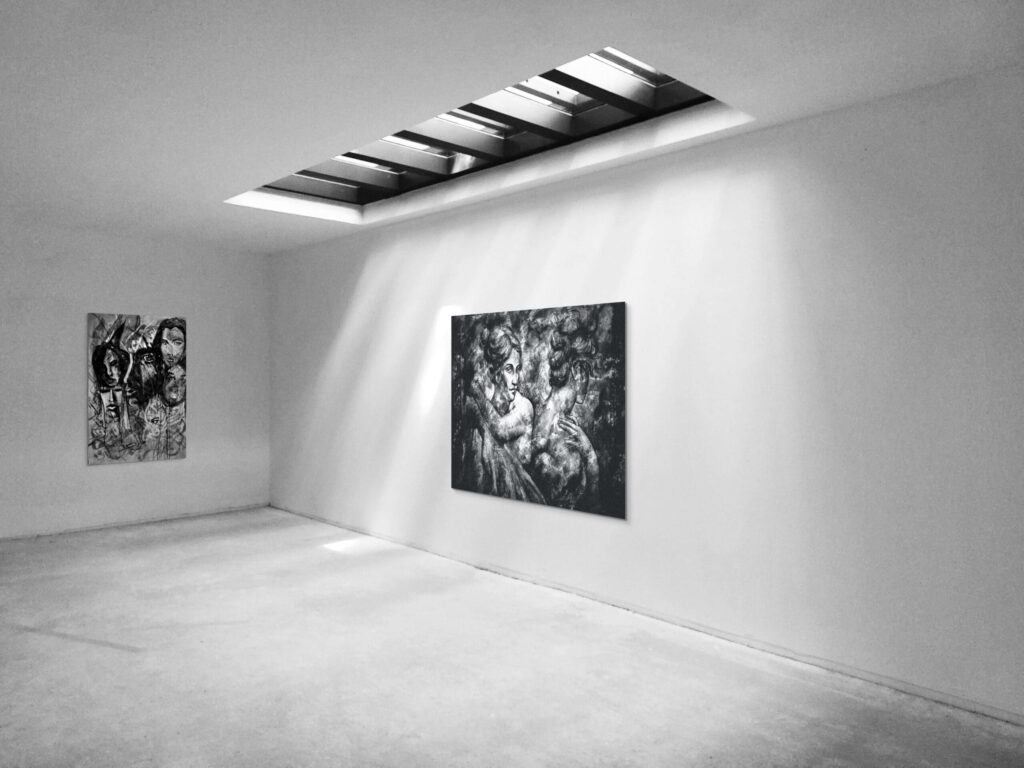
Value as an art element can be easily understood when seen on a scale of gray.
Color theory and the art value scale
In an art piece, we are able to see a light source, highlights of the specific spots where the lights hit objects or subjects, and shadows of the spaces that are left in darkness or are free from the spotlight. The fact that we are able to identify all these details has to do with color and how dark or light can it go on a certain scale.
It’s usually easy to understand it when seen on a greyscale: white being the ultimate tint or light hue and black representing the darkest of shadows. This is the “Value Scale” that was introduced by the American painter and color theorist, Denman Ross, at the beginning of the 20th century and that is still being used to understand value as a principle of the composition of an artwork.
This scale opens up the possibility to understand color under “another light” giving it a range of possibilities for the tones that can be achieved and a clear path for the artist to play with the contrast of light and darkness to get the viewer to see exactly what they intended.
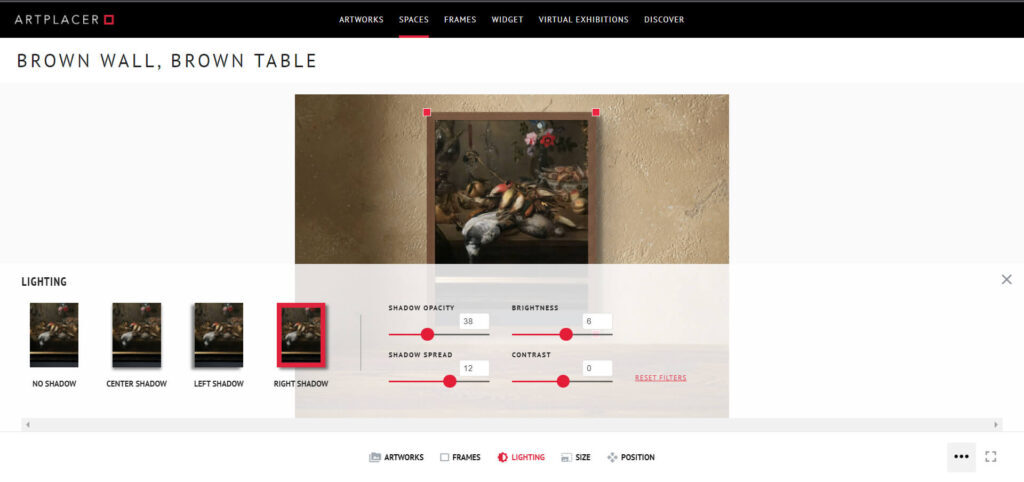
When presenting an artwork, lighting needs to enhance its original value.
How to present art and its value
We live in a hybrid world and whether an artist or a gallery is doing an in-situ show or launching a 3D virtual gallery, they need to take into account the lighting in the space and the effect it has on the art pieces presented: does it enhance its original contrast, shades and the effects their creator intended? Not long ago the technique used to achieve a certain value (light-shadow contrast) in a piece indicated its economic value and still is a factor that should be respected when curating an exhibition.
If you decide to present your artwork in a digital room mock-up, you have the chance of playing around with the value of the image you are creating. As a user you have access to a “Lighting” editing tool where you can adjust the shadow opacity and spread, the brightness and contrast of the piece, to match the space and its light source and achieve a realistic look that will help visitors see the piece in its original and intended value.
Now that you know what “value” is in art it’s time for you to reflect upon it and to create it.



